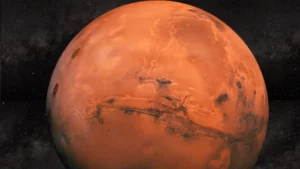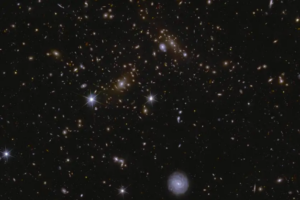China Launches TJS-17: Expanding Its Classified Geostationary Satellite Program

🚀 A New Milestone in China’s Secretive Space Endeavors
On April 10, 2025, China successfully launched the TJS-17 satellite into geostationary orbit, adding yet another classified satellite to its growing and enigmatic space fleet. This latest mission, veiled in secrecy, is believed to support advanced communication and potential military intelligence operations.
🛰️ What Is TJS-17?
A Next-Gen Satellite for High-Speed Communications
The Long March 3B rocket lifted off at 12:47 p.m. EDT from the Xichang Satellite Launch Center, marking the 19th orbital mission for China this year. The Shanghai Academy of Spaceflight Technology (SAST) later confirmed the successful deployment of Tongxin Jishu Shiyan-17 (TJS-17), or Communication Technology Experiment Satellite-17.
📌 Key Purpose:
TJS-17 is designed to test multi-band, high-speed satellite communication technologies—though no images or specifications were released, keeping with the tradition of secrecy around TJS missions.
🌍 The Mysterious TJS Satellite Constellation
Since its first launch in 2015, the TJS series has raised global curiosity and speculation. These satellites primarily operate in geostationary orbit (GEO) and are believed by Western analysts to serve roles such as:
- 📡 Signals intelligence (SIGINT)
- 🛰 Early warning and surveillance
- 🔍 Space-based inspection operations
- 🪖 Strategic support for the People’s Liberation Army (PLA)
To date, 16 TJS satellites have been launched—with no mention of a TJS-8, further adding to the mystery.
🔗 Connected Launches: A Coordinated Trio
The launch of TJS-17 follows closely behind two other similar missions:
| Satellite | Launch Date | Launch Vehicle | Developer | Orbit |
|---|---|---|---|---|
| TJS-15 | March 9, 2025 | Long March 3B | SAST | ~90.3°E |
| TJS-16 | March 29, 2025 | Long March 7A | SAST | ~152.5°E |
| TJS-17 | April 10, 2025 | Long March 3B | SAST | TBA |
All three satellites were developed by SAST, suggesting a synchronized rollout of new capabilities.
🧭 Celestial Symbolism: The Heavenly Kings Motif
China is infusing cultural symbolism into these missions. The TJS-17 mission patch features the King of the North, one of the Four Heavenly Kings from Buddhist mythology. Previously:
- TJS-15: King of the West
- TJS-16: King of the East
👉 This hints at a potential fourth mission to complete the mythical celestial set.
📈 China’s 2025 Launch Ambitions Soar
The TJS-17 launch is part of China’s broader space strategy for 2025, which may include over 100 orbital launches—driven by:
- 🚀 Rising commercial launch activity
- 🛰 Building satellite megaconstellations
- 🔁 Development of reusable launch systems
Recent Missions:
- April 1: Four internet test satellites
- April 3: Long March 6 launch carrying Tianping-3A (02)
🔭 Upcoming Missions to Watch
China is planning a series of high-impact missions for the remainder of 2025:
🌠 Tianwen-2
- Objective: Asteroid sample return & comet rendezvous
- Launch Window: May 2025
🧑🚀 Shenzhou-20 & Shenzhou-21
- Destination: Tiangong Space Station
- Role: Crewed missions for station rotation and upgrades
🚚 Low-Cost Cargo Missions
- Possible debut of new, reusable cargo spacecraft
- Targeted for use with medium-lift launch vehicles
🧩 Final Thoughts: Strategic Silence, Global Curiosity
While TJS-17’s true mission remains under wraps, it clearly signals China’s continued push for dominance in both communication technologies and space-based military capabilities. As the global space race intensifies, eyes remain on the East—wondering what moves will come next from above.







